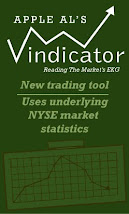Long term chart:
Couple of short term alternates:
Alternate #1
Alternate #2
Major W5 is in progress from the 1732.00 low of Feb 5. Possible
targets for Major W5 are at 1868.75 where Major W5 = .618 x Major W1 and
at 1953.25 where Major W5 = Major W1. Based on these targets there are
two primary possibilities evident for the EW count.
Alternate
#1 has the ES in Intermediate W5 of the move and thus in its very last
stages. Intermediate W5 is forming an ending diagonal and has already
laid down Minor Waves 1 through 3, with wave 4 either complete or very
close to complete. Target here is that 1868.75 area. Supporting that
target is the fact that in this count Intermediate W5 = Intermediate W1
at 1871.25.
Alternate #2 has Major W5 extending with
only Intermediate Waves 1 and 2 complete and Intermediate W3 in progress
from Thursday's low at 1832.75. Target is at 1953.25.
================================================================
Tick Analysis
You may recall the tick analysis work presented in early
January. Those studies had shown real potential for a few months leading into that post. However, the results went seriously off the rails during January and forced me back to the drawing board.
One of the aspects of the original work that I really liked was the concept of a moving average of the instantaneous (1 period) tick minus the same period simple moving average of the tick. The idea here is to attempt to generate a leading indicator of sorts that signals a pending change in trend. Using 26 periods of 30 minutes (see note below) as a base, following is a chart of that using the average (H+L/2) tick per period as the input:
As can be seen, if a trade was made whenever the MA crosses the zero line the results in the last month were pretty favorable. Whether this will hold true over an extended period remains to be determined. The highlighted areas are of interest. What's happening during those periods is that the instantaneous tick, after spiking above or below the SMA (simple moving average) of the tick, is settling back in to roughly match the value of that SMA. I read the pattern as the signature of a trending market.
Accumulation and distribution are important market concepts. The idea is that savvy players accumulate long positions near the bottoms and distribute (sell) positions near the top. So can that activity be picked up by analyzing what's going on in the tick? What if the formula employed in the above study were to use the tick highs per period rather than the tick average? Applying this idea results in the following chart:
As can be seen in the highlighted areas, using tick highs as input to the formula results in a pattern that has the chart diverging at lows - i.e. it does in fact appear to be picking up accumulation. But it's not reliably picking up distribution.
So what if we now run the study using tick lows as input? Here it is:
Can't say that this reliably picks up distribution either - it seems to cycle pretty much concurrent with the market, at least during this time frame. Perhaps this study will appear differently in a bear trend as opposed to the bull trend that was in effect during the time frame under review.
Putting all three ideas together results in a very intriguing picture:
The highlighted area at the lows at the beginning of February are worth discussing. During that period all three averages diverged against the double bottom that was formed at that time. Whether this pattern will repeat at significant tops or other bottoms remains to be seen.
Note: Why 26 half-hour bars? The first part of the answer revolves around the fact that a normal trading day is 6 1/2 hours in length, so 30 minutes is the largest whole unit subdivision of that span. Why 26 bars? Because of the 24 hour "news cycle". There is a chicken and egg argument as to whether news drives the market or the other way around, but there's no question that news and the market are interrelated. The 24 hour news cycle refers to the fact that the news for any particular day is repeated throughout that day and reset the next day. If the news is significant enough it will echo through the next day. So 26 half-hour bars would encompass that two day span. Besides, it works.
Note: On the road next week through the weekend, so no update




















